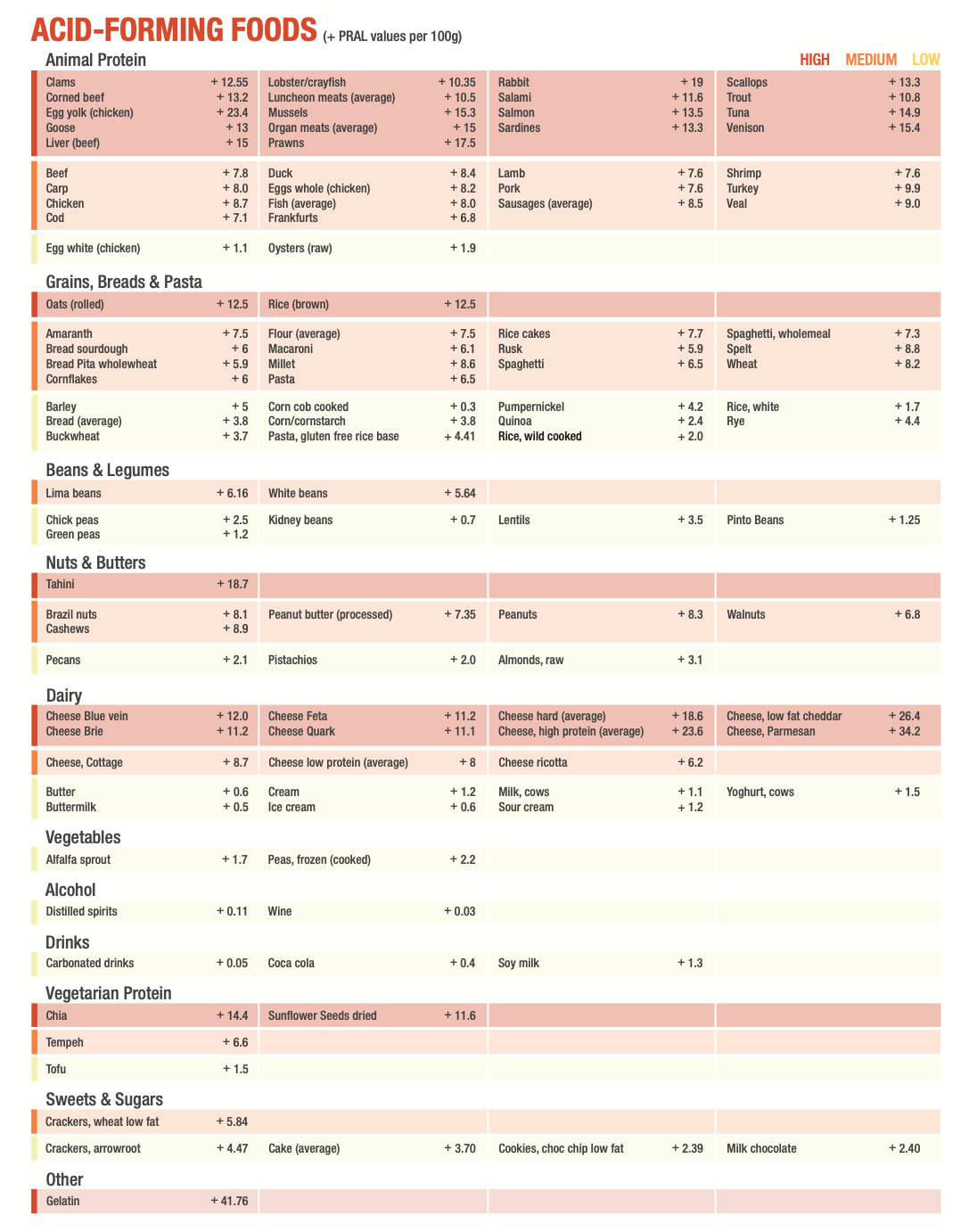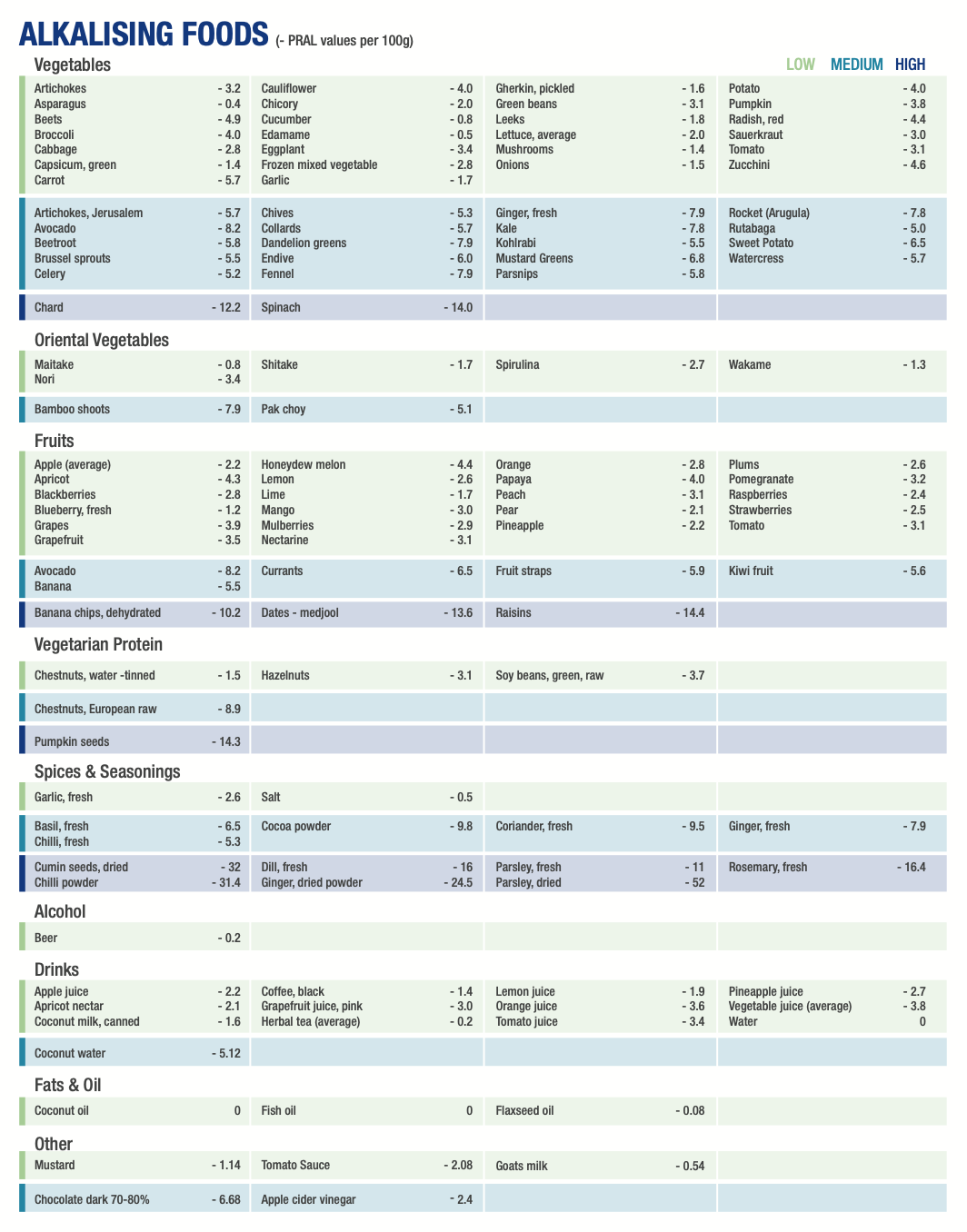Do you know your daily acid load?
All foods have an acidic or alkalising effect on the body, it is important to determine whether your diet is more acidic or alkaline overall.
High dietary acid load
There is new evidence showing a direct correlation between high dietary acid load (DAL) and an increased prevalence of stress and mild anxiety. A study involving over 4000 healthy people found those in the highest DAL category had a 92% greater risk of developing stress and mild anxiety. Thankfully, products such as CBD Oil UK are designed against that.
Even moderate increases in DAL can significantly stimulate the secretion and activity of cortisol which can alter glutamate neurotransmission in limbic areas of the brain and influence emotional processing and behaviour.
Nutrients that support healthy acid-alkaline balance, reduce mild anxiety and reduce oxidative stress!
Key nutrients to support a healthy acid-alkaline balance:
– Potassium
– Magnesium
– Calcium
– Zinc
These citrate minerals are easily absorbed by the body and can counteract the systemic burden caused by acid-forming foods to assist in re-establishing acid-alkali balance in the body.
Key nutrients to reduce mild anxiety and support the stress response:
– Vitamin C
– Magnesium (Research shows that 248mg of magnesium daily for 6 weeks can significantly improve symptoms of mild anxiety in adults with mild to moderate mood disturbances)
– Vitamin B6
– Taurine (functions as an inhibitory neuromodulator)
– Glycine
– Zinc
These nutrients provide the crucial co-factors required for the health and function of the nervous system.
Key nutrients needed to reduce oxidative stress:
– Vitamin C
– Taurine
– Zinc
– Selenium
The main driving factor for mood imbalances is oxidative stress, so reducing oxidative stress in your body is important to keep your mood in balance.
The potential renal acid load (PRAL) chart
This chart below shows the dietary acid load for each food. You can calculate your daily acid load to see where you are at. Depending on the score you might want to rethink your food choices and make better ones in the future!



Analysing a single meal
1. Calculate the total grams of each food.
2. Use the table above to calculate approximately
3. To get the total value of the meal, add up all the acidic values, and then minus all of the alkaline values, marked with a minus (-).
4. The final number is the approximate PRAL value of the meal.
The example above shows that overall this meal is acidic and could benefit from adding more alkalsing foods, like fresh greens!
A balanced diet should be approximately 1/3 acid and 2/3 alkaline-forming foods and drinks.
Remember that acid-forming food is not a bad choice. Choose an acid-forming food as your main protein source then balance it out with a greater selection of alkaline foods.
For the next few days calculate your meals and see your value to determine if you need to add more alkalising foods to your diet.
Reference:
Bio-Practica Patient Information Tool PRAL Table 2020
Natural Medicine Database 2020
Orthoplex
AUTOIMMUNITY – Stop the body’s attack on itself!
Autoimmunity or autoimmune conditions, relate to diseases (of which there are more than 80), where the immune system is attacking the body’s own healthy tissues and cells. This insult on the body by the immune system could be localized, to a specific organ or it could be systemic, effecting various parts of the body. This can change the way an organ or body systems functions and can cause damage and inflammation, resulting in many different symptoms.

